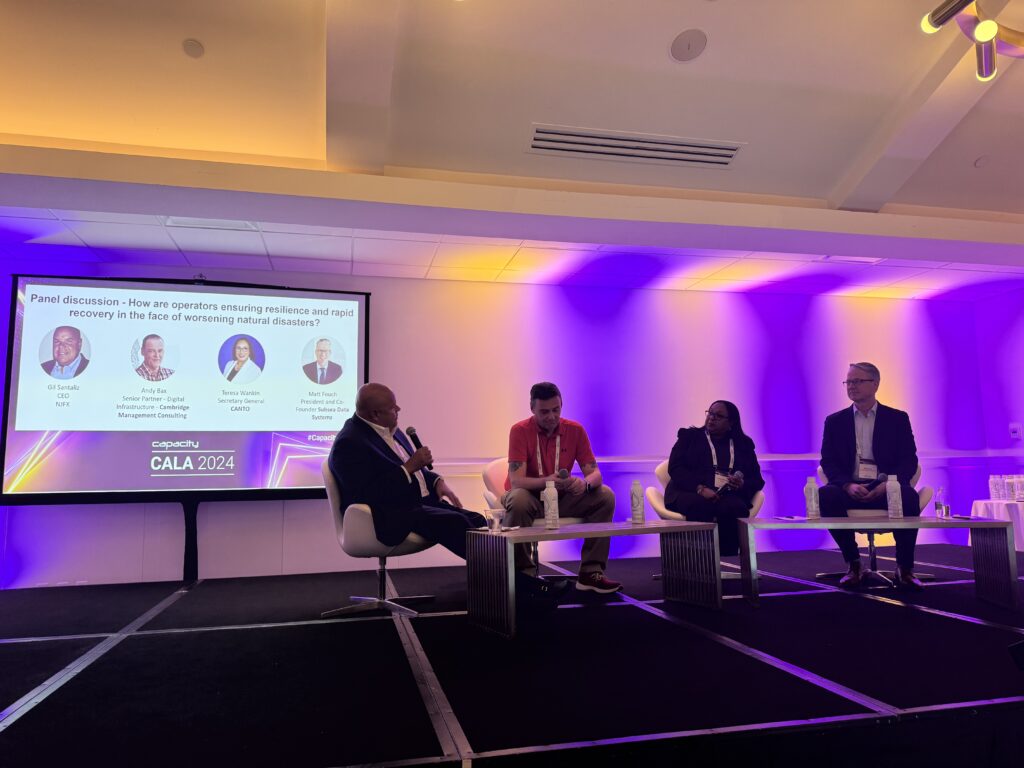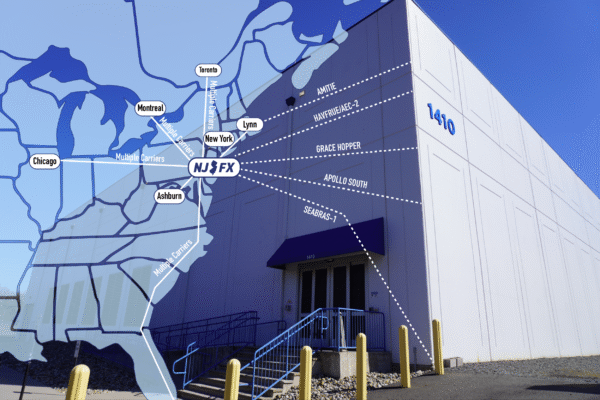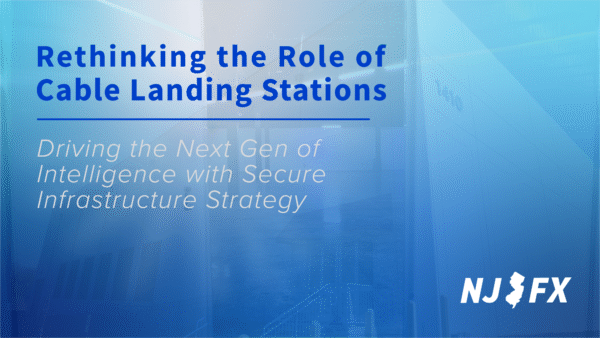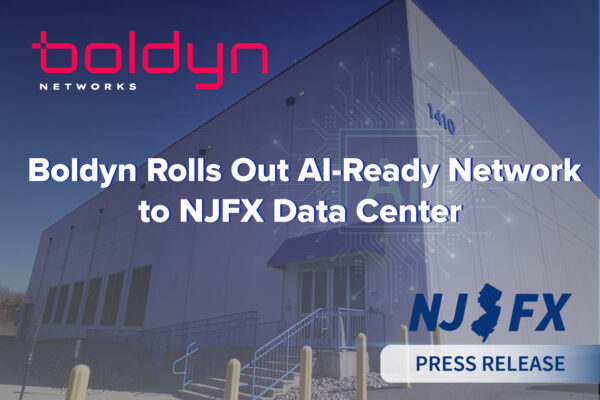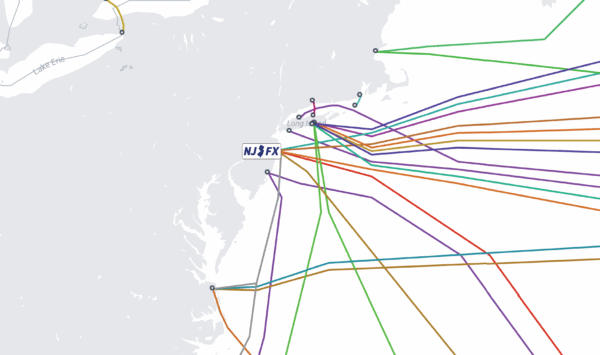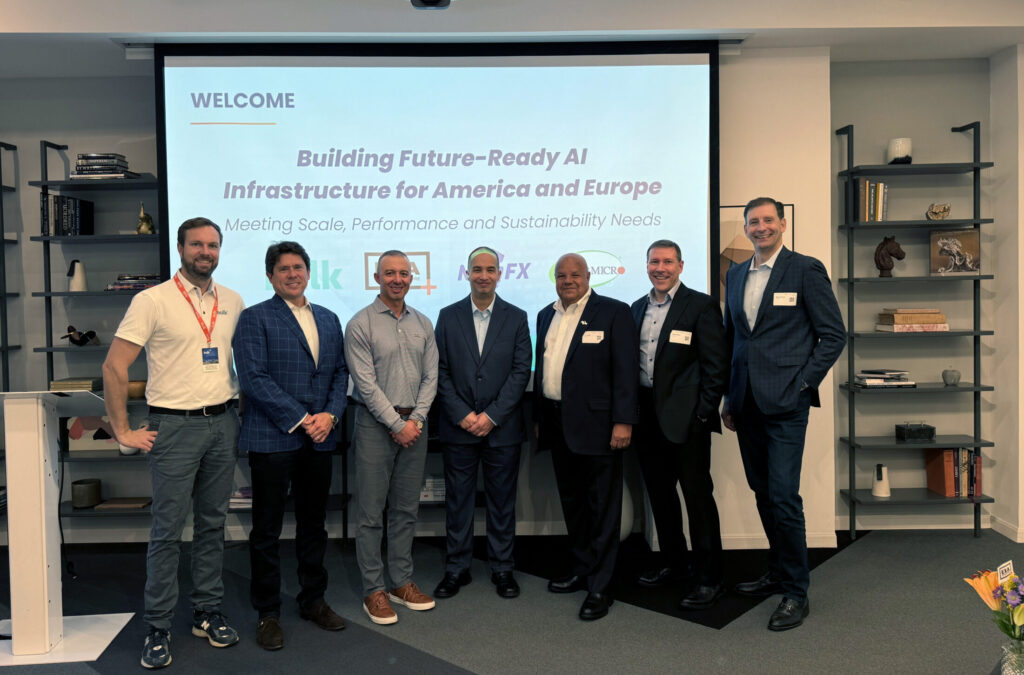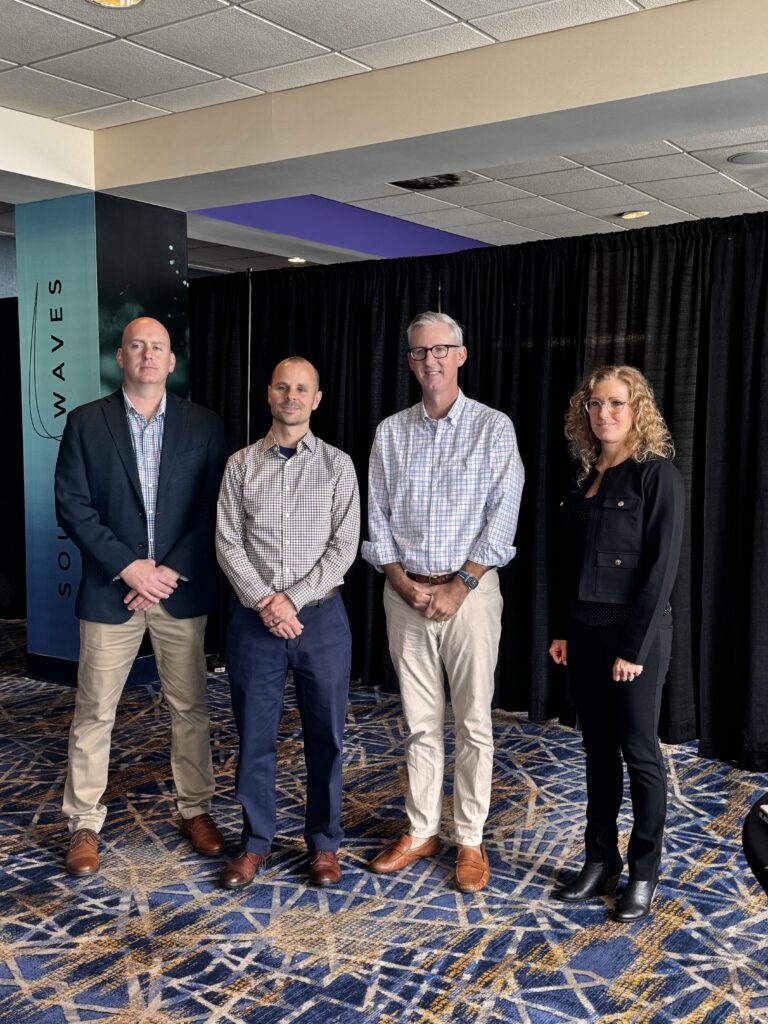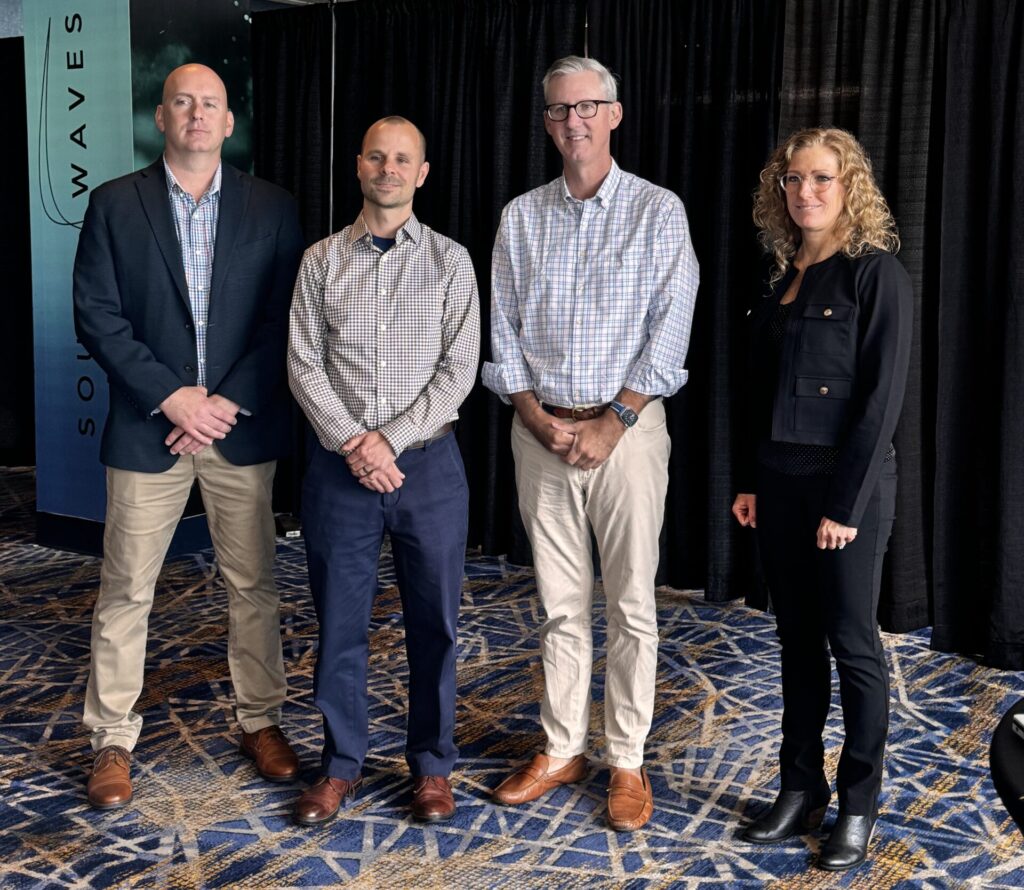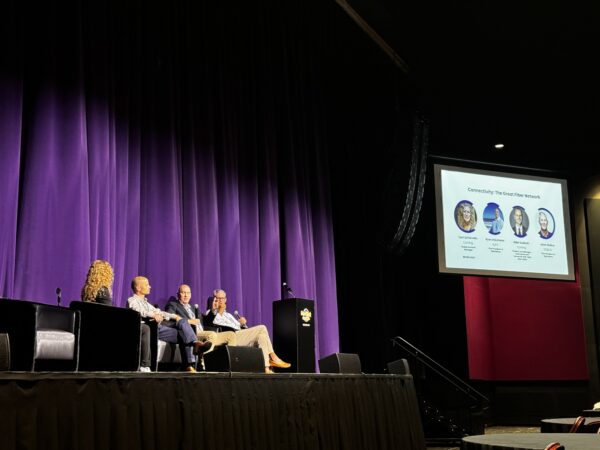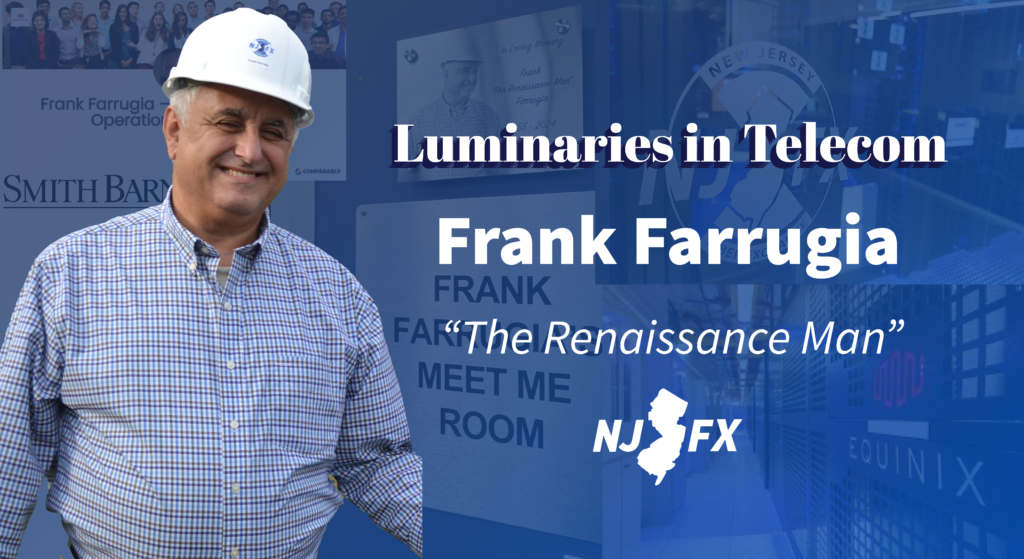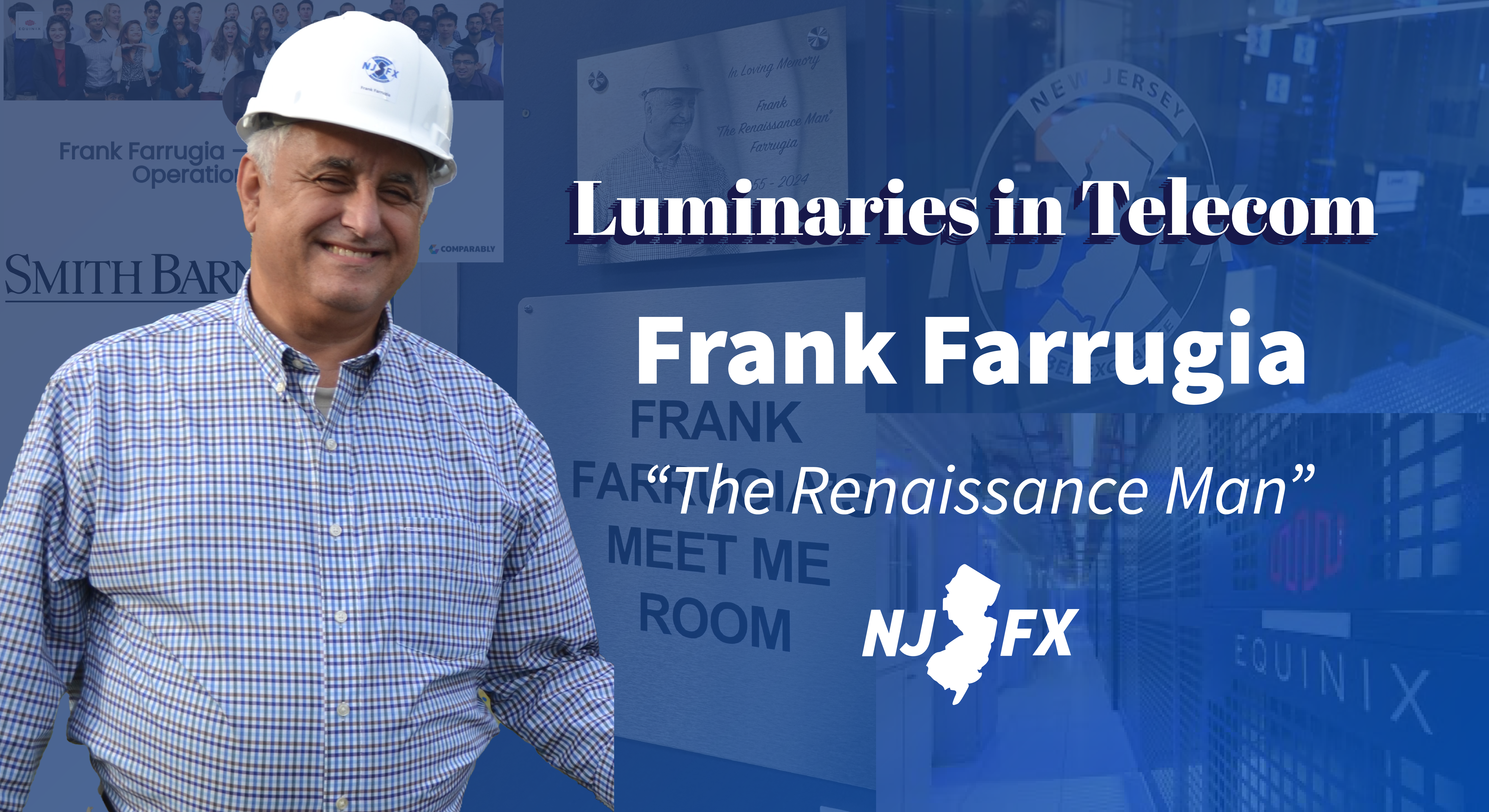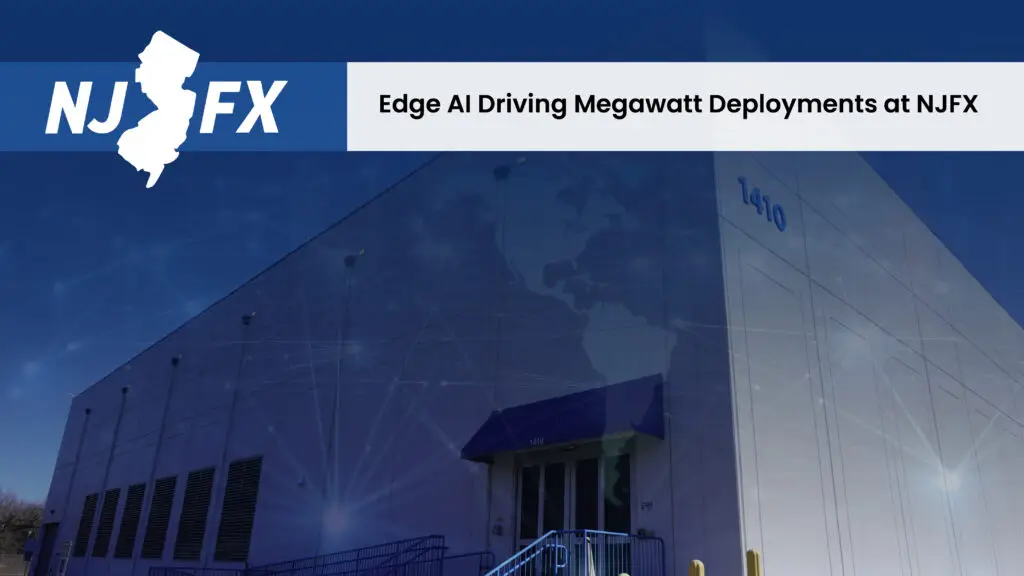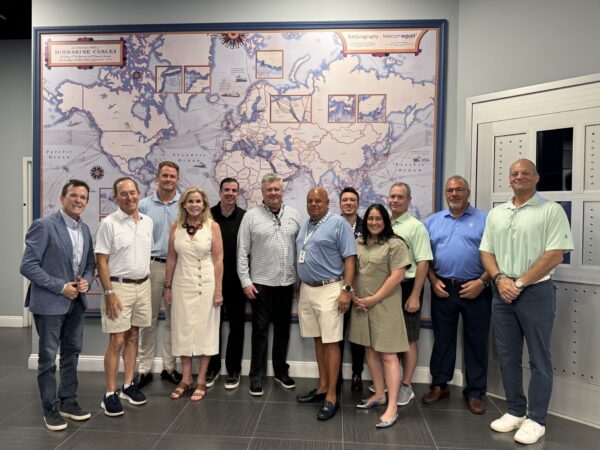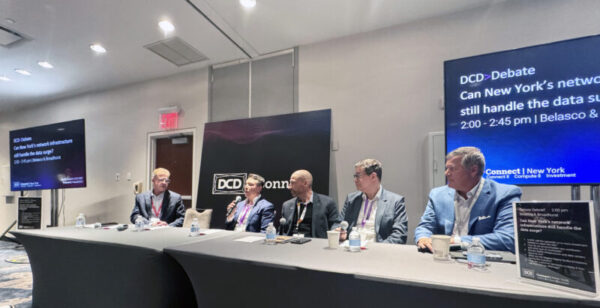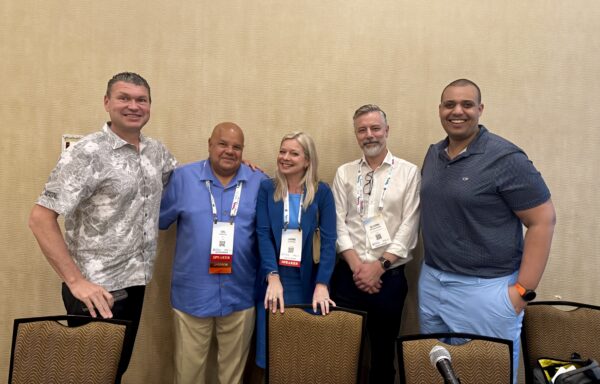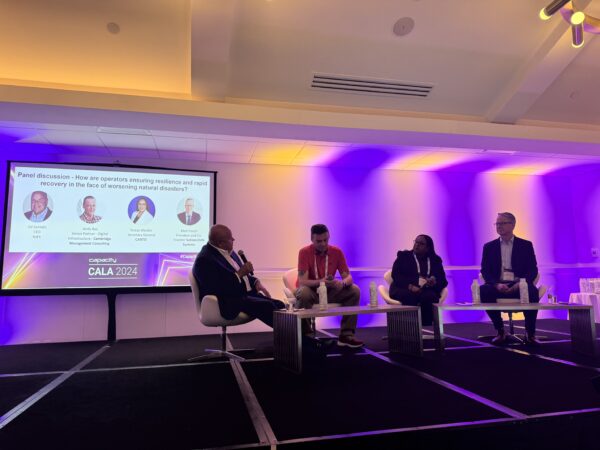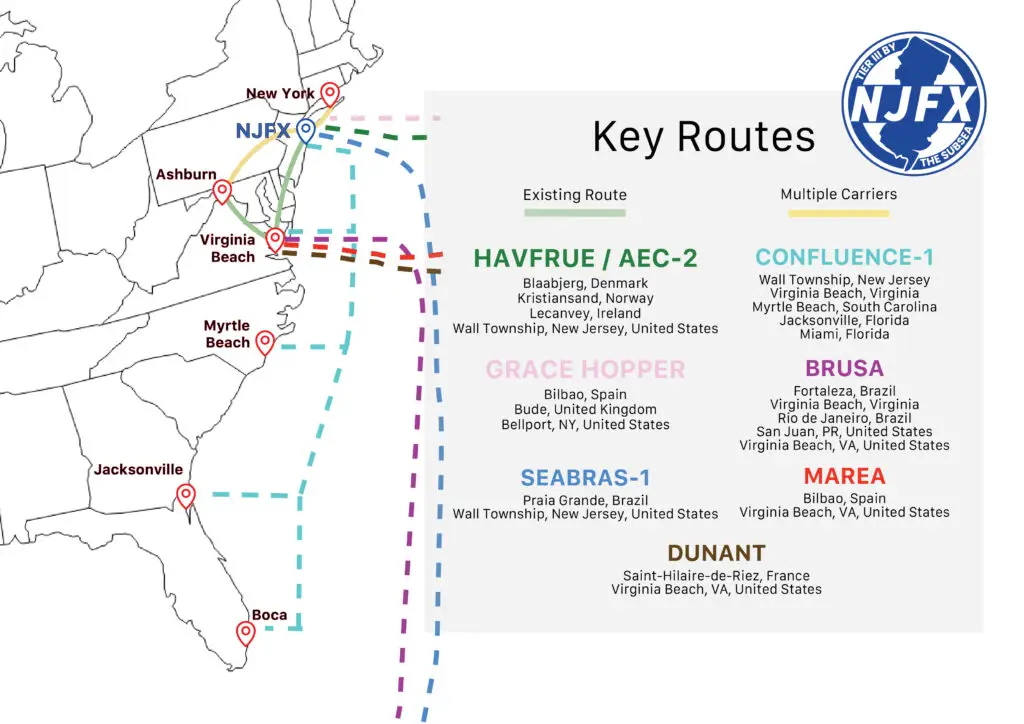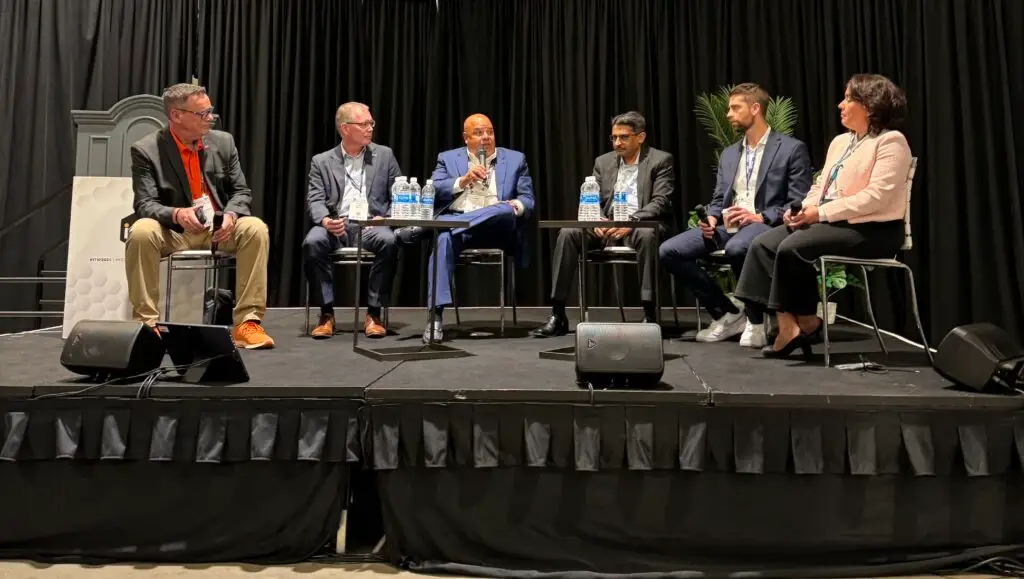The Important Role of Disaster Preparedness for Critical Infrastructure
Te Important Role of Disater Preparedness for Critical Infrastructure
A NJFX Article
Dec 20, 2024
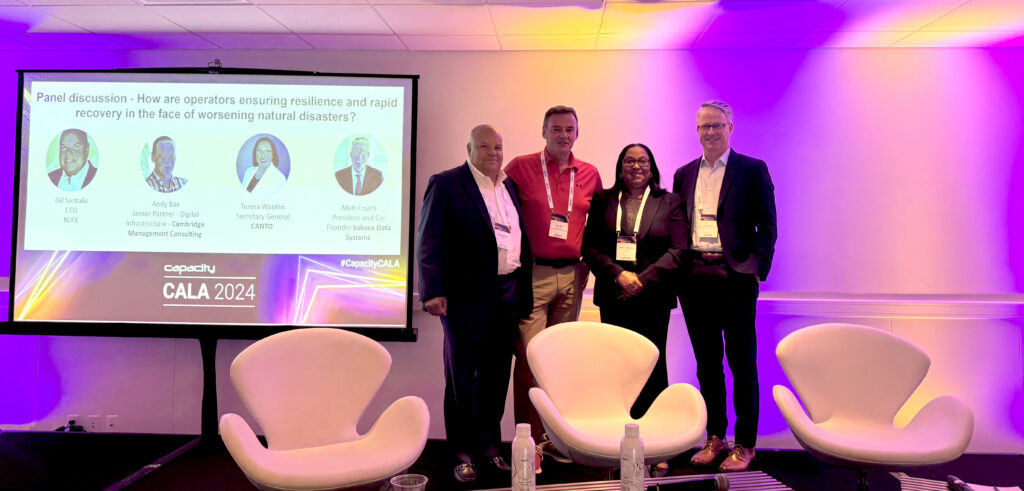
December 11, 2024 – Capacity CALA – The panel discussion focused on the the critical intersection of technology, governance, and resilience in the face of natural disasters affecting the Caribbean/LatAm region. Moderated by Gil Santaliz, CEO and Founder of NJFX, the panel brought together industry leaders to discuss strategies for disaster preparedness, the role of technology in mitigation, and the essential partnerships between governments and private enterprises.
Introducing the Panelists
- Gil Santaliz, NJFX CEO and Moderator
- Andy Bax, Senior Partner for Digital Infrastructure at Cambridge Management Consulting
- Teresa Wankin, Secretary General of CANTO
- Matt Fouch, President and Co-Founder of Subsea Data Systems
Building Resiliency in the Caribbean: Technology, Collaboration, and Government Incentives
The Caribbean is no stranger to natural disasters. Each year, hurricanes, tropical storms, and other extreme weather events threaten the region’s critical digital infrastructure. At a recent discussion held at the PGA National Resort, industry leaders, government representatives, and stakeholders gathered to address the urgent need to strengthen connectivity and disaster preparedness. Moderated by Gil Santaliz, CEO and Founder of NJFX, the conversation drew on decades of collective experience to outline a path forward, combining innovative technology solutions with strategic policy and inter-regional collaboration.
“The Caribbean faces unique challenges in maintaining robust digital infrastructure amidst frequent natural disasters,” said Teresa Wankin, Secretary General of CANTO. She recalled the devastation created by Hurricane Maria, “The entire region felt the brunt of Maria, and in Puerto Rico, there was considerable damage to the landing stations, which left them out of connectivity for quite some time.”
Wankin emphasized that business continuity planning cannot be an afterthought. “We’ve seen time and time again the importance of business continuity planning, pre, during, and after,” she explained, highlighting CANTO’s efforts in uniting operators, cable companies, and regulators. “We worked with a private company to develop a framework for how to treat disasters. The importance of multiple landing stations to mitigate volcanic activity and regulatory challenges cannot be overstated within the region.”
Diversifying Infrastructure
Andy Bax, a Senior Partner at Cambridge Management Consulting with over 30 years of experience in building and operating submarine cable systems, stressed the necessity of resilient network architectures. “The economic model of diversifying landing sites and collaborating with South American networks can significantly reduce reliance on single points of failure,” he said. Sharing insights from his time in Indonesia after the tsunami, Andy underscored the importance of communication when catastrophe strikes. “When you’re in a disaster zone, the ability to communicate is absolutely critical.”
Andy’s perspective shed light on both the technological and policy components of resilience. “We architect networks with a plan for failure, ensuring that if one segment goes down, others maintain connectivity. It’s not just about technology—it’s about planning, outreach, and making sure everyone, from NGOs to local operators, knows how to respond.”
Turning to the future of infrastructure resilience, Matt Fouch, President and Co-Founder of Subsea Data Systems, discussed the technological advancements that are being place on wet cables, such as SMART Cables. These subsea cables would integrate sensors to monitor environmental and operational parameters in real time. “Smart cables are intended to be sensors connected to the cable, providing real-time data on seismic activity, pressure, and temperature,” said Fouch. “With smart cables, we can sense potential cable breaks before they happen, determine the cause, and respond proactively.”
Cost remains a barrier. “Our goal is to reduce the cost of sensor systems from $1.5 million to around $150,000, making it feasible to deploy smart cables across the Caribbean and Latin America,” Fouch explained. He acknowledged the economic hurdles but insisted the investment would pay dividends in disaster preparedness, “Funding remains a challenge, but the potential impact on resilience and safety is immense.”
Bridging the Economic Gap and Enabling Action Through Cooperation
Technology alone cannot solve these challenges if operators, governments, and businesses are not incentivized to implement it. Both Teresa and Andy agreed on the importance of government involvement. “Governments need to incentivize operators through mechanisms like the Universal Service Fund to invest in resilient infrastructure,” suggested Theresa. Andy concurred, noting that without financial support and a supportive regulatory environment, companies might resist investing in long-term projects that do not yield immediate returns.
Santaliz pointed out a case in Puerto Rico, where a state-of-the-art facility remained underutilized because operators could not justify the expense of relocating their equipment. “We have these beautiful, hurricane-hardened facilities, but without incentives, operators stay put,” Santaliz observed. This illustrates the need for public policies and partnerships that encourage migration into safer, more resilient infrastructure and networks.
Fouch underscored that the responsibility for funding and implementing such technologies should not fall solely on island nations. “Governments have funded nearly all the science that helps us understand climate impacts,” he said. “They need to step in here as well.” International agencies, including the United Nations, could play a role in coordinating early warning systems and sharing best practices across borders.
The panelists consistently returned to the theme of cooperation—between governments and industry, operators and regulators, and even across regions. “This is about finding ways to work together so that when disaster strikes, we’re not playing catch-up,” said Wankin. “We need a framework that allows everyone to respond quickly, effectively, and collectively.”
A Shared Responsibility
As the discussion wrapped up, the consensus was clear: building a more resilient infrastructure requires a multifaceted approach. It demands strategic investments in technology like smart cables, sensible policies and economic incentives from governments, and a sustained commitment to collaboration at every level.
“Collaboration with regulators and governments is essential to create an environment conducive to investment and resilient infrastructure,” Wankin reaffirmed. Fouch underscored the transformative potential of sensor-based networks, “The goal is to make these technologies accessible, so every island can monitor its environment and anticipate challenges before they become crises.”
Bax concluded by calling for continuous outreach and enforcement: “We must use available technologies to enforce protection measures and maintain outreach programs to safeguard our critical assets.”
The collective insights from the panel at Capacity CALA reflect a vision of a more secure, connected, and resilient Caribbean. By embracing innovation, fostering public-private partnerships, and ensuring that policies, incentives, and international cooperation are in place, the region can protect its infrastructure, reduce downtime during disasters, and ultimately safeguard the well-being and economic stability of its communities.
Key Takeaways:
- Collaboration is Crucial: Effective disaster preparedness requires seamless cooperation between operators, regulators, governments, and private enterprises.
- Embrace Technological Innovations: Smart cables with integrated sensors can provide real-time data and early warnings, significantly enhancing resilience.
- Diversify Infrastructure: Multiple and strategically located landing points ensure continuity of connectivity even when parts of the network are compromised.
- Government Incentives Needed: Public-private partnerships and supportive regulatory frameworks are essential to encourage investments in resilient infrastructure.
- Address Man-Made Risks: Developing protocols and enforcement mechanisms can mitigate the impact of intentional disruptions to critical communication networks.
Want to learn how you can Expand your Network to New Heights
Reach out and talk to an expert today
Dive Deeper in NJFX News
The Important Role of Disaster Preparedness for Critical Infrastructure Read More »

